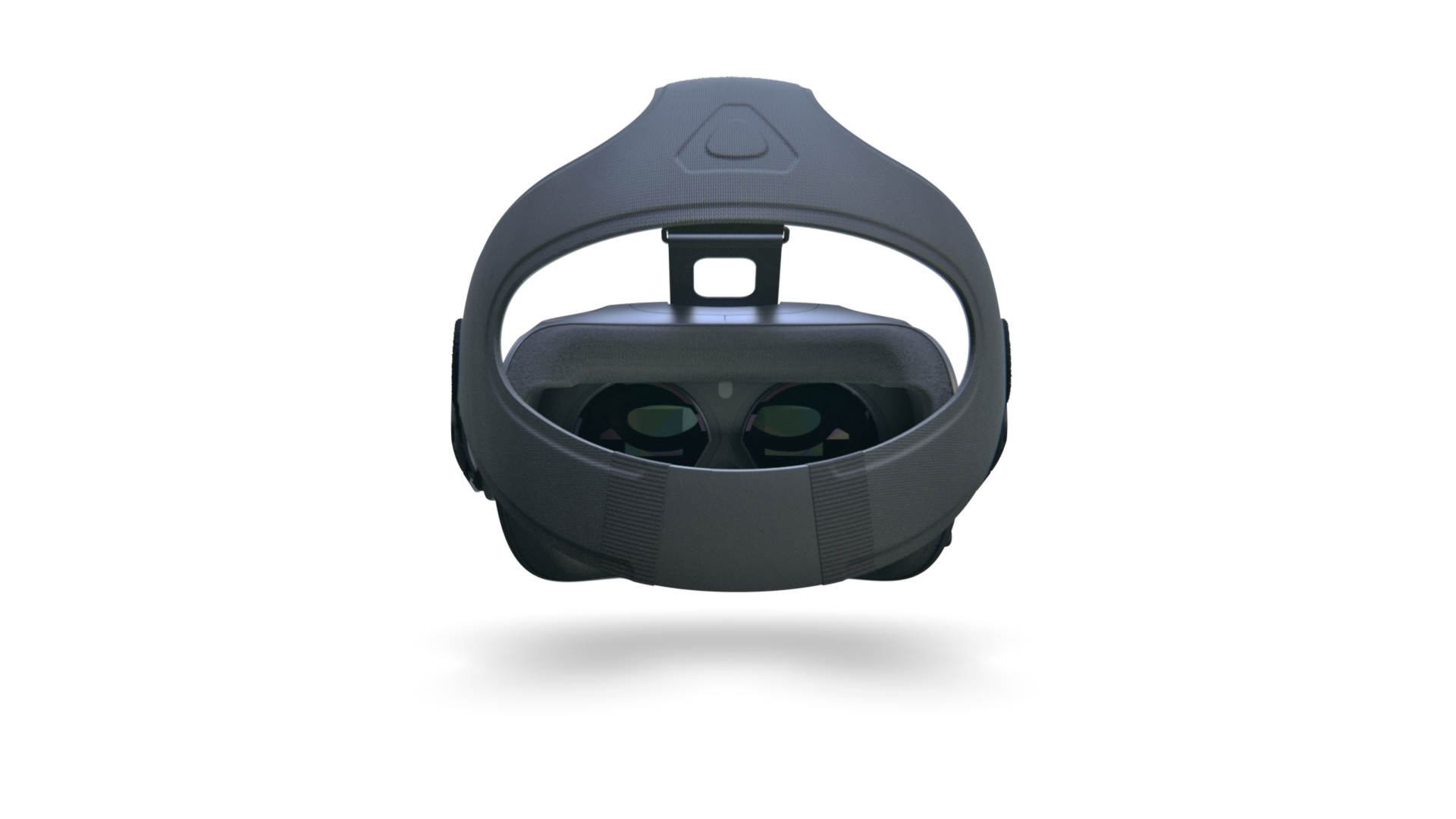HTC Vive Will Cost $799, Gets Last-Minute Hardware Updates
Take a breath, because here we go again. Five weeks after Oculus announced that the Rift would cost $599, drawing a wave of criticism from some quarters, HTC and Valve announced today at Mobile World Congress that its consumer Vive virtual reality kit, available for pre-order on February 29, shipping in April, will set you back $799.
That extra $200 gets you what HTC and Valve called “the complete package,” meaning the HMD, two wireless controllers, two wireless base stations, a link box and ear buds, and some games bundled in for a limited time (Job Simulator: The 2050 Archives from Owlchemy Labs; and Fantastic Contraption from Northway Games).
Oculus has not announced pricing for its wireless Touch controllers, which will ship sometime later in the first half of this year. Those controllers would put the Oculus and HTC VR kits closer to parity, price and package wise. The lack of Touch controllers in the first Oculus consumer offering is the object of HTC's not-so-subtle jab when it says "the complete package."
When peppered with questions about the cost, HTC and Valve also talked about the experience the companies were aiming to create, meaning the combination of two base stations, two controllers that are tracked in 360 degrees, and Vive's room scale exploration capability and the Chaperone technology that helps make it possible. (The Chaperone system maps the barriers of the tracking area.) Valve's Chet Faliszek said room scale was the main principle from the beginning, that the companies wanted to put the user in the middle of the content, with integrated input devices, with full tracking, within small or large volumes of space (or seated), and without the user worrying about physical space barriers, or the technology at all.
When HTC and Valve say “the complete package,” that’s also what they mean.
Hardware Changes
HTC also revealed a few hardware changes and details. You’ll remember that the at CES, HTC revealed a front facing camera that incorporates external objects into the VR experience as an extension to the Chaperone system (you see a blue wireframe that outlines other objects and people in the camera’s view).
Get Tom's Hardware's best news and in-depth reviews, straight to your inbox.
The final Vive HMD will be equipped with a microphone, which will be tied to Vive Phone Services, including receiving and accepting phone calls, calendar reminders, and seeing and replying to text messages. The HMD gets a slightly more refined head strap and a polished finish, along with some adjustments to the two face gaskets (two are included in the box), including more eyeglass relief.
There are no changes to the controllers since we saw them last at CES (these included haptic feedback and dual stage triggers, as well as some nice ergonomic changes), but HTC and Valve reiterated that the controller batteries last four hours and can be charged via universal USB.
The base stations get updated motors, which HTC said are quieter. Optimally, the base stations should be positioned above your head, but they can also be on the floor, so long as they are across from one another to help eliminate occlusion.
What's Next
HTC and Valve hinted that more details will continue to trickle out at appropriate industry events, with GDC being the next target time frame, and where the companies will most likely announce more content updates. When pressed about the zero day content catalog, HTC and Valve said simply to stay tuned. Valve just hosted a Steam VR developer showcase, and we've written about many of those upcoming games. The companies did emphasize that there are plenty of non-gaming content partners working on offerings as well, in fields like medicine, education, and sports, where precision tracking opens up new possibilities.
Vive-ready PC bundles like those for the Oculus Rift are coming, HTC said, but the company isn’t ready to talk specifics (such as who, what and when).
HTC specifically said it is not talking about minimum specs for the consumer Vive -- only recommended ones -- with a GeForce GTX 970 and AMD Radeon 290 representing the low end of what HTC and Valve think will deliver optimal performance. Valve’s Chet Faliszek did say that the companies are working with Unity and Unreal to push the minimum requirements down further for future implementations.
While the price of the offerings from Oculus and HTC will likely continue to be the source of debate, there will undoubtedly be plenty of takers. HTC and Valve see the high-end PC enthusiast and VR enthusiast markets as ripe for the Vive, which is probably not a stretch given that most enthusiasts will either have a system capable of powering the Vive or the Rift, or be a graphics card upgrade away. When pressed about market sizing, HTC and Valve, like so many others we've asked, failed to get specific.
Vive pre-orders begin next Monday, February 29, at 10am EST, with customers receiving the product in early April. It will ship in 24 countries (US, Canada, UK, Germany, France, Austria, Belgium, Czech Republic, Denmark, Finland, Iceland, Italy, Netherlands, Norway, Poland, Spain, Switzerland, Ireland, Sweden, Taiwan, China, Japan, Australia, New Zealand), it will include a warranty, and all of the charging cords and the tethering cable for the base stations (they are wireless, but wired is an option).
There will be support resources (call centers, chat rooms, Steam communities) for help, but HTC said that the company has gone through many setup trials and feels confident that it will be pretty easy, even saying that despite guidelines regarding base station placement, precision isn’t really necessary. Valve has integrated SteamVR, meaning that any system updates will be pushed out to all systems simultaneously.
Fritz Nelson is the Editor-In-Chief of Tom's Hardware. Follow him on Twitter, Facebook and Google+. Follow us on Facebook, Google+, RSS, Twitter and YouTube.
-
kommando kodiak The VIVE is the superior VR hardware, they completely eliminated the motion sickness caused by the input lag that the Rift has.Reply
Also that head strap looks much more comfy and isntead of having an M$ xbone controller forced on you here you have the excellent controllers they had at all the demos. -
Dunzaus Yes it got superior hardware and an superior experience and let's not forget that it got Valve's support who makes AMAZING games so I'm sure that this will have the better value with time also.Reply
Though if the Oculus gets some none timed exclusives then I might also get one of their headsets down the road.
But for now and or if I could only pick one of them then my money is with Htc Vive, simply because it go features and Valve's games support. -
jasonelmore better for what? Better at wii like gaming? sure, Better at sitting at your desk doing VR? nah not even closeReply
Oculus is a full pound lighter, has integrated headphones.
When asked, most preferred the Oculus for Simulators, Star Citizen, Indie games, euro truck etc.., while others preferred the vive in the open room (on your feet) gameplay.
Until they get rid of the Trio of thick heavy wires, walking around the room with one is cumbersome. all of the demo's show the user picking is legs up every 30 seconds to keep from tripping over the wires.
Oculus is probably the better buy this generation, and vive might be the real winner 2-3 years down the road. just not today.
EDIT: I dont think the oculus touch controllers will be any higher than $150.. Even $150 is high for a controller. So i doubt vive will be cheaper, as the dev's have already said it wont be -
Dunzaus Replybetter for what? Better at wii like gaming? sure, Better at sitting at your desk doing VR? nah not even close
Oculus is a full pound lighter, has integrated headphones.
When asked, most preferred the Oculus for Simulators, Star Citizen, Indie games, euro truck etc.., while others preferred the vive in the open room (on your feet) gameplay.
Until they get rid of the Trio of thick heavy wires, walking around the room with one is cumbersome. all of the demo's show the user picking is legs up every 30 seconds to keep from tripping over the wires.
Oculus is probably the better buy this generation, and vive might be the real winner 2-3 years down the road. just not today.
EDIT: I dont think the oculus touch controllers will be any higher than $150.. Even $150 is high for a controller. So i doubt vive will be cheaper, as the dev's have already said it wont be
There is no reason why the Vive can't do everything that the Oculus can and then it offers even more.
And the Vive has gotten much lighter in the past months and Every articly I have read favors the Vive.
The Vive can do everything the Oculus can and More.
Can you link some recent articles that favors the Oculus? -
hoofhearted Let's not forget Oculus is owned by Facebook where Vive is backed by Valve. While Facebook may have more money and all the press says they are not Facebookizing it and leaving it to the true gamers, Valve has very expansive gaming experience and history.Reply -
toddybody Both the Rift and Vive will be fantastic headsets. IMO, the cost difference justifies an argument for/against either handset. IF a large amount of VR titles (non Rift/Vive sponsored) favor a common controller, the motion controls of the VIVE may seem niche. That said, I just bought an XBOX ONE controller + Windows adapter...so I'm not inclined to go Rift and receive HW I dont need.Reply
My only hesitation on the Vive was the purported weight in comparison to the Rift. If this has been/is fixed by launch, I'll most likely choose Vive.
On the specs, I'd imagine that a Fury X/CXF 390s or 980ti/SLI 970s will provide the optimal experience. I average around ~90fps on modern titles with decent settings at 2560x1440...and would hate to dip often: 799 for "puke goggles" -
kcarbotte Replybetter for what? Better at wii like gaming? sure, Better at sitting at your desk doing VR? nah not even close
Oculus is a full pound lighter, has integrated headphones.
When asked, most preferred the Oculus for Simulators, Star Citizen, Indie games, euro truck etc.., while others preferred the vive in the open room (on your feet) gameplay.
Until they get rid of the Trio of thick heavy wires, walking around the room with one is cumbersome. all of the demo's show the user picking is legs up every 30 seconds to keep from tripping over the wires.
Oculus is probably the better buy this generation, and vive might be the real winner 2-3 years down the road. just not today.
EDIT: I dont think the oculus touch controllers will be any higher than $150.. Even $150 is high for a controller. So i doubt vive will be cheaper, as the dev's have already said it wont be
The retail Rift is lighter than the Vive Pre (by how much, I don't know) but I neither one of them is uncomfortably heavy. I've never been in one for longer than 15 minutes at a time, but I was able to move around quick briskly and it never felt cumbersome on my head. In my opinion the weight is a moot argument.
As for the cables, yes, it is a bit of a nuisance, but hardly one worth writing off the experience all together. Room scale VR is way too good to wait for untethered devices to try it.
I've never fallen from tripping (it certainly could happen) but I have stepped on the cable and unplugged it a couple times. Its not ideal, but again, not that bad.
You get used to the cable being there and it becomes a subconscious thing after a little while.
I wouldn't count on the Touch controllers being cheap. There's a lot of intricate tech inside them, and you also need a second base unit for them, so it's controllers and a base station. Low end i'd say $100, but I wouldn't be surpised to see them come in at $200. -
Dunzaus And for people saying that you should wait for 2nd gen..Reply
There won't be a 2nd gen if no one buy these. And both these got Great hardware, but to me the Rift is an Oculus but with more features and I see no problem in making 2x2.5 meter room you need to move around. I'd rather pay extra and get the full experience and the support of Valve that has proven time and time again that they can make great games. If you think that it will only be ''wii-like-games'' then you just don't know Valve...





